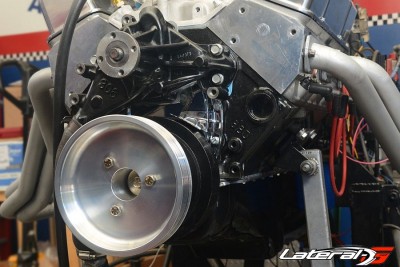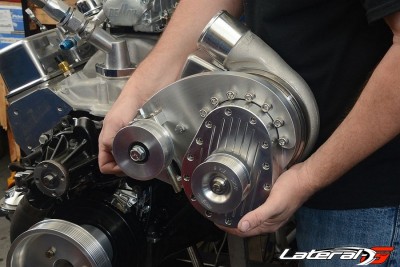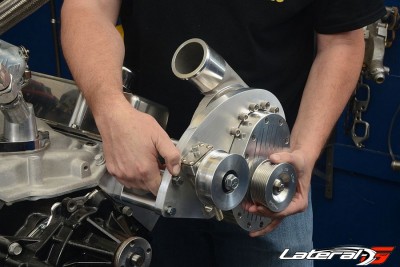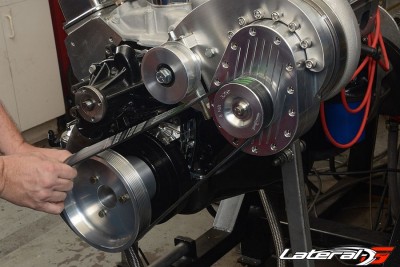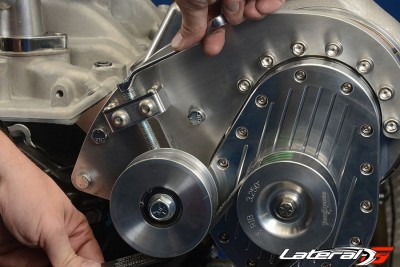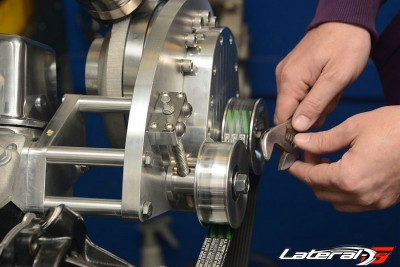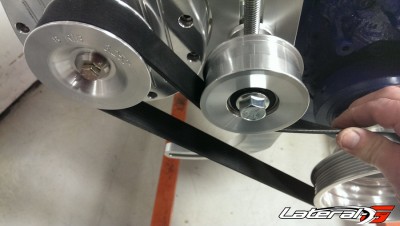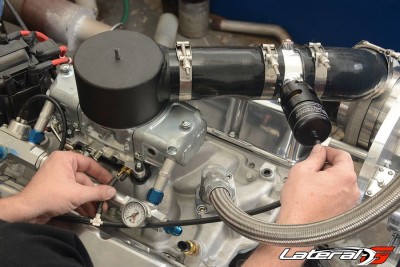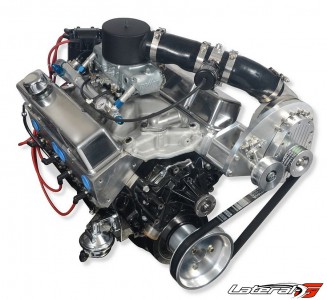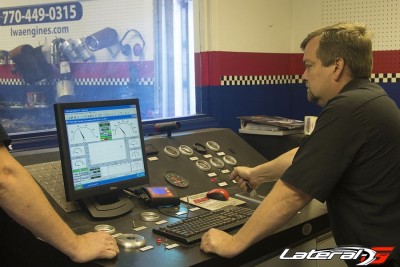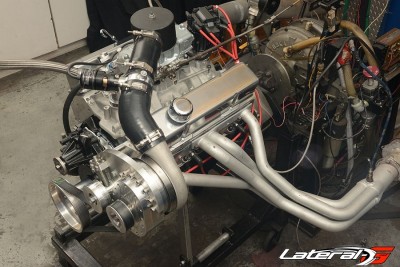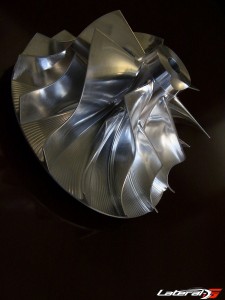
This system is unusual in that it’s a blow-through kit that’s complete. It includes an entire discharge tube assembly with the relief valve; V-band clamps, which allow the supercharger discharge port to swivel for easy alignment; air filter, and carburetor hat.
Text By: Roger C. Johnson and Tim King
We all love normal atmospheric pressure. At 14.7 psi, it’s the perfect arrangement for humans and animals alike. It’s easy and natural to breathe and gives us all the power we need. You can also say the same about the engine in your car. In most cases, modern vehicles come off the assembly line with some form of a naturally aspirated power plant.
The combination works just fine for the vast majority of drivers. But that’s not us.
Since we’re always looking for smart ways to gain more horsepower, one of the best approaches is supercharging. It’s a device designed to grab Mother Nature by the scruff of the neck and shake her silly. Supercharging dramatically ups the ante on the pressure and quantity on your intake charge thereby making significantly more power for an internal combustion engine. Call it “unnatural aspiration”. The concept has been around for 131 years and even helped generate the power for some of history’s greatest prop-driven fighter planes.
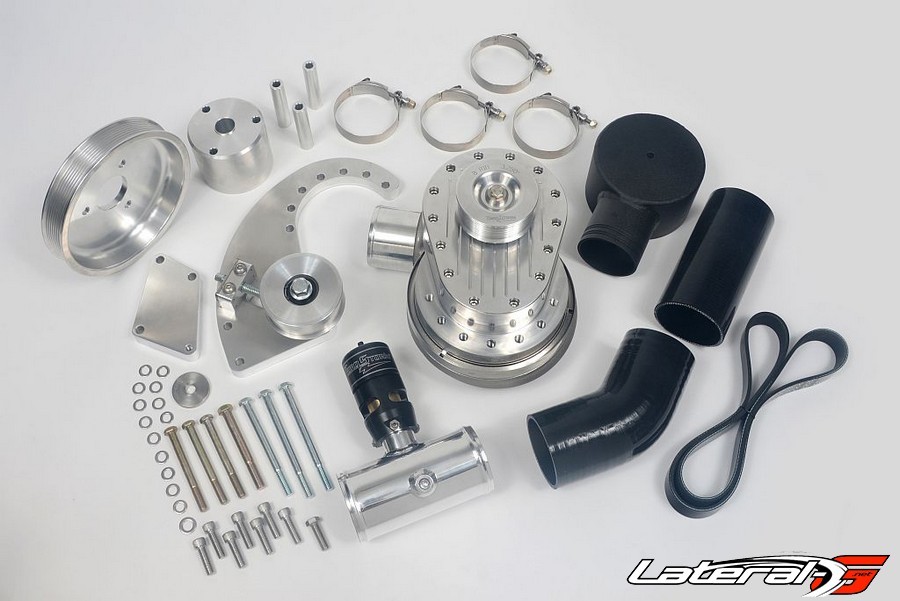
When a list of components reads like the menu in a five-star restaurant: ceramic bearings, tool steel straight-cut gears, a V-band adjustable scroll, an 8-rib serpentine drive belt, a ¾ inch billet mounting bracket and a self-contained oiling system, all with a limited lifetime warranty—Bon appétit.
As you might imagine, today’s state-of-the-science has brought power adder design to its highest level of sophistication. Supercharger manufacturer TorqStorm is now offering blow-through systems for carbureted and throttle-body fuel injected V8 applications. Their latest rendition consists of complete and fully integrated packages with the potential of generating up to 700 horsepower.
Specifications
The TorqStorm superchargers have a few improvements to help make them one of the best in the business. Their superchargers utilize 6061 billet aluminum gear housings, 3/4″ thick billet aluminum brackets along with a self contained oil supply. This means there’s no need to plumb oil lines to and from your motor, or tapping the oil pan and possibly getting contaminants in there.
This eight-rib system generates 6-8 lbs. of boost. What does that mean? This supercharger can produce up to 400 lb.-ft. of torque at just 2000 RPM’s. An impressive feat, let’s take a look at the process!
Installation
In order to test out their supercharger, TorqStorm reached out to a few companies for help. First was BluePrint engines, who supplied a 383 cubic-inch small-block Chevy specifically set up to handle boost. Pace Performance orchestrated all of this while Walden Automotive actually did the dyno testing.
Once receiving the BluePrint engine, Pace Peformance grabbed a four barrel Demon blow-through carburetor. A large discharge hose connects to the carburetor hat, with a blow-off valve in the middle. From the supercharger, V-band clamps are utilized to ensure a tight fit and precise angle. On the crank, a spacer is installed onto the harmonic balancer. They actually supply two different spacers, for both long and short water pumps to handle both configurations.
- Spacing for the crank pulley is determined by water pump length. From the fan hub to the block, the long Chevrolet pump measures seven-inches. The short water pump, on the other hand measures 5.625in. The appropriate TorqStorm spacer is attached to the factory pulley and harmonic damper by the retaining bolt and washer provided.
- In common with the spacer, the eight-rib, eight-inch diameter supercharger crank pulley is made from billet aluminum 6061. It is retained by three long Grade 8 bolts that penetrate the spacer and fasten the pulley to the damper.
- After installing the crank pulley, the next step is to fasten the supercharger head bracket and the supercharger mounting arrangement to the cylinder head. This is achieved by using one short bolt and two long bolts with spacers and the 3/4-in thick C-shape supercharger mounting bracket.
- Compatible with blow-through carburetors and fuel-injected throttle bodies, the centrifugal supercharger is simple and reliable, even when operating at constantly high velocities.
- This standard eight-rib 3.250in supercharger drive pulley generates 6 to 8lb of boost on most engines. On the adjacent tensioner pulley, it’s important to undo the flanged nut by one quarter-turn before installing the belt.
- Install the eight-rib drive belt and adjust the tensioner pulley down onto the belt.
- TorqStorm entrusts belt adjustment to the human hand instead of a spring-loaded tensioner.
- The tensioner pulley possesses two bearings and when final belt tension is achieved the flanged nut is tightened. If the flanged nut (1/2in x 13tpi) is not loosened before belt tensioning and retightened after, damage could result.
- To check the belt tension, place your finger and thumb on the upper span of the belt, between the tensioner pulley and crank pulley, and twist it. When the belt resists twisting beyond 60 or 70 degrees, belt tension is sufficient.
- Blow-through carburetors are specially calibrated to function with centrifugal superchargers and turbochargers using a bonnet. Situated between the supercharger and the engine, the blow-through carburetor is exposed to forced air pressure and it delivers the boost to the cylinders with the precise air-fuel mixture.
- The bonnet is installed on the carburetor and two hoses connect it to the supercharger. Midway a vacuum-operated pressure relief valve (waste gate) is positioned. This device releases excessive boost pressure, which in turn prevents overloading the system under sudden deceleration.
- This system is unusual in that it’s a blow-through kit that’s complete. It includes a complete discharge tube assembly with the relief valve; V-band clamps, which allow the supercharger discharge port to swivel for easy alignment; air filter, and carburetor hat.
- Comprehensive testing demonstrated strong low-end torque and instant throttle response, qualities that simply outgunned similar test engines employing turbochargers
- Not so much a race engine supercharger, instead TorqStorm’s design is aimed at mild mannered engines—supporting up to 700 HP. It typically increases power output by 150 to 200hp.
- The supercharger’s compressor wheel operates at around 70,000rpm. Splitter blades positioned in an alternating sequence with the compressor blades increase the system’s overall efficiency.
- The compressor wheel draws air in and accelerates it through the slender passage of the diffuser. This intensified air collects in the volute or scroll where the energy is converted into positive induction pressure.
Dyno Tests
The proof is in the pudding right? Walden Automotive completed both pre and post pulls on the engine to see exactly how many horses were pushed out of the BluePrint small block.
In normally aspirated form, the 383 small block produced 440 HP and 472 lb.-ft. torque at 5,700 and 4,300 RPM’s respectively. With the supercharger system engaged, that same engine churned out 627 HP and 566 lb.-ft torque at 5,800 and 4,800 RPM respectively.
That’s an increase of 187 horsepower and 94 lb.-ft. of torque! Not bad at all for a few hours worth of work. To see all the applications TorqStorm offers, be sure to hop on their site!
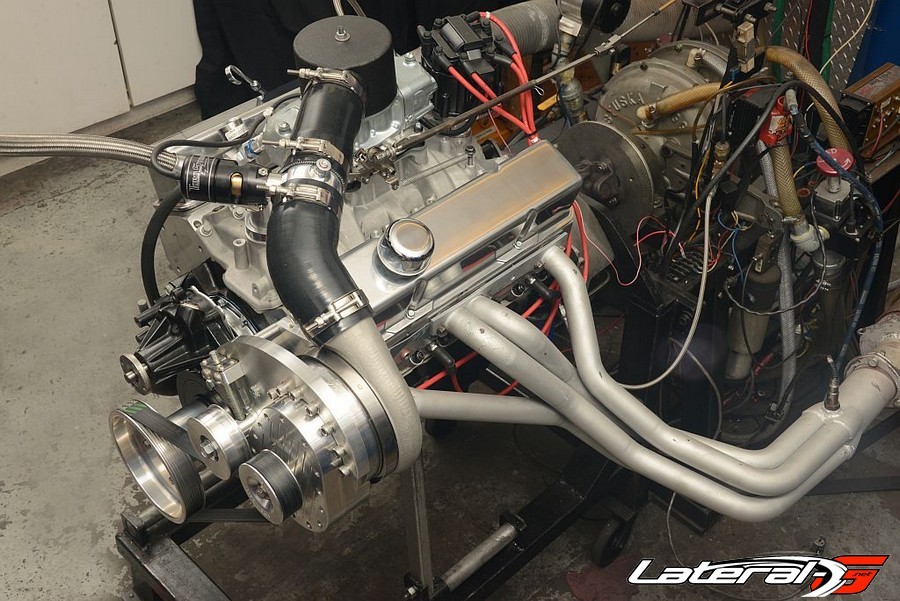
Not so much a race engine supercharger, instead TorqStorm’s design is aimed at mild mannered engines—supporting up to 700 HP. It typically increases power output by 150 to 200hp.
Sources
TorqStorm Superchargers
Grand Rapids, MI
(616) 706-5580
Pace Performance
Boardman, OH
(888) 748-4655
BluePrint Engines
Kearney, NE
(800) 483-4263
Lamar Walden Automotive
Doraville, GA
(770) 449-0315



